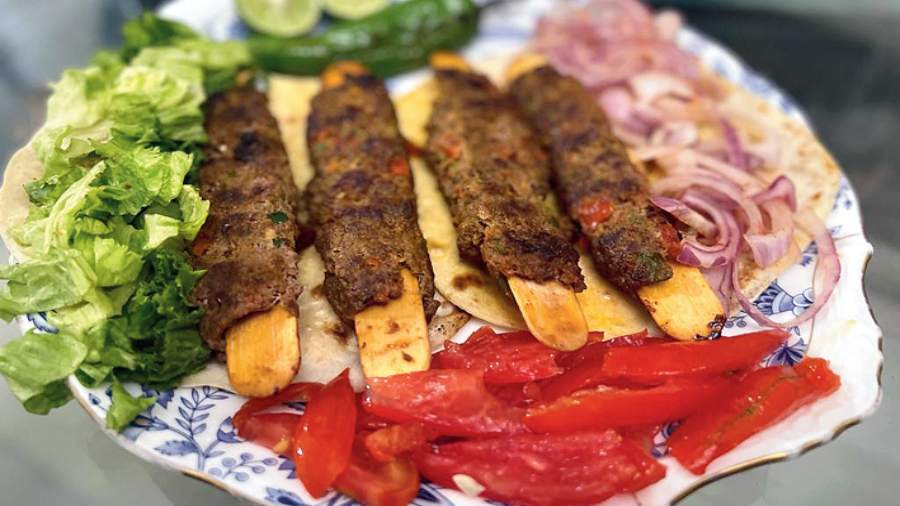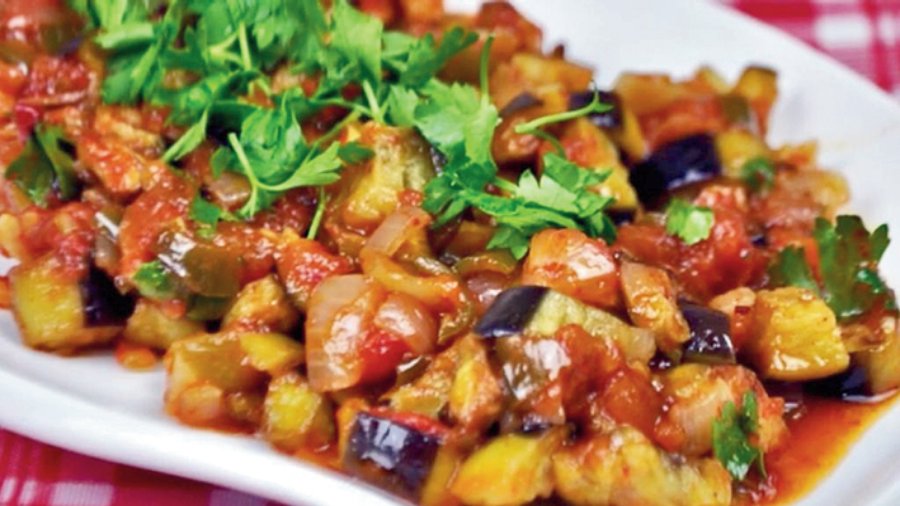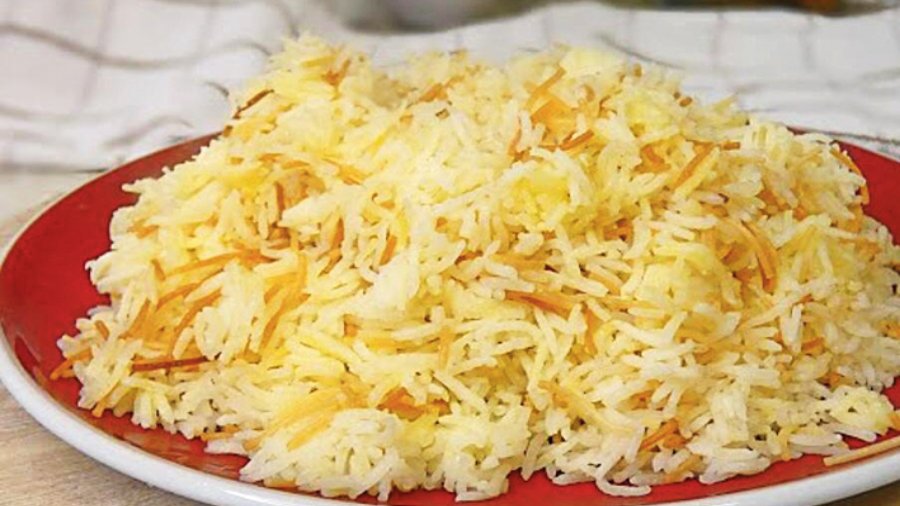The establishment of the Ottoman empire became the foundation of Turkish cuisine. Turkish culinary techniques evolved through the reign of the Ottomans. The kitchen was regarded as a very important place, especially those of the grand Ottoman palaces where numerous chefs and apprentices worked. The once modest tables turned into elaborate feasts and banquets.
In 1923, with establishment of the Republic of Turkey, Turkish cuisine became separated into two different categories. There was the regional folk cuisine and then the classical Turkish cuisine, which reflected the culinary delights of the Ottoman palaces and included items such as kebabs, yoghurt dishes and stuffed vegetables. The chefs were exceptional bread and cheese makers. Here I have shown you a few popular dishes which can be made in the home kitchen with ease.
CILBIR
Cilbir is a Turkish dish of poached eggs served over a bed of garlic yoghurt. There are records of Cilbir eaten by Ottoman sultans as far back as the 15th century. It is served with melted butter infused with paprika.
INGREDIENTS
•Eggs: 2, poached
• Hung curd (full fat): 1 cup whisked
• Parsley: 1tbsp, finely chopped.
• Butter: 1tbsp
• Olive oil: 1tsp
•Salt: To taste
• Pepper: To taste
• Sourdough bread
METHOD
• To the whisked yoghurt add minced garlic, parsley and salt. Keep aside.
• In a small pan heat butter with olive oil. Let it brown just slightly, but do not burn it.
• Add paprika and remove from fire.
• For the poached egg
• Fill a wide pan 2 inches with water. Add a teaspoon of vinegar. Heat the water till little bubbles start from the bottom and begin to rise.
• Add the eggs carefully. Lower the heat and cook covered for 2 minutes. The yolk should not be hard. It has to be runny.
• Remove carefully with slotted spatula so that the water drains out.
• For plating
• Spread the yoghurt on a plate. Make two small dents next to each other for the poached eggs. Place the eggs. Pour the butter paprika around the yoghurt. Garnish with little parsley. Best had with a sourdough bread.
ADANA KEBAB

Adana Kebab
Adana kebab is a very popular Turkish street food as well as restaurant dish and is made of mutton or chicken mince. It’s a long hand-minced kebab mounted on a wide iron skewer and grilled over burning charcoal. This kebab is named after Adana, the fifth largest city of Turkey. It is usually had with lavash bread and salad of greens and onions and lemon juice. Here I have simplified the process of making the kebab for the home kitchen.
INGREDIENTS
• For the kebab
• Mutton: 400g minced; 80 per cent mince and 20 per cent fat
• Red capsicum: ½, chopped
• Green capsicum: ½ (or 2 big green long peppers chopped)
• Green chillies: 2, chopped
• Red chilli powder: 1tsp
• Garlic paste: 1tsp
• Ginger paste: 1tsp
• Red chilli flakes: 2tsp
• Oregano: ½tsp
• Salt: To taste
• For lavash bread
• Flour: 3 cups
• Lukewarm water: 1 cup
• Milk: 4tbsp
• Sugar: 1tsp
• Active dry yeast: 1tsp
• Salt: 1tsp
METHOD
• For the kebab
• First grind all the ingredients except mince to a coarse puree.
• Then add the mince to it and blitz it again a couple of times till everything is mixed well.
• Put it in a bowl. Put a small bowl in the middle. Place a burning piece of charcoal in it. Put 1tsp ghee and cover the bowl for 5 minutes. Remove the cover and the bowl with the charcoal.
•Here, instead of skewers I have used broad ice cream sticks.
• Take a portion of mince and cover the stick. This takes a little practice. Make a few dents on the mince. That’s a signature of Adana Kebab.
• In a non-stick pan add a little oil and place the kebabs. Flip after 3-4 minutes and cook till meat is tender and fully cooked. Remove onto a plate.
• For lavash bread
• Knead all the ingredients into a smooth dough and then brush with oil and keep aside covered with a damp cloth for 1-2 hours.
• Then make small roundels and roll to make thin rotis. Roast it on a tawa till brown spots appear and it will also puff up. The lavash should be soft.
• Remove the kebab from the sticks with the help of lavash bread so that it does not break.
• Serve with thinly-sliced onions and tomatoes, grilled long pepper or chillies, and lime juice along with lettuce.
SARAY KEBAB (PALACE KEBAB)

Saray Kebab (Palace Kebab)
The name itself suggests that this dish originated during the Ottoman times and was eaten by the royalty. But they had to have vegetables too in some form or the other. The royal cooks had to keep inventing dishes which were nutritional as well as tasty. Later, the Saray Kebab became a very popular restaurant dish in Turkey.
INGREDIENTS
• Mutton/chicken: 500g, cut into small cubes
• Olive oil: 4tbsp
•Onions: 2, chopped
• Carrots: 2, medium
• Green peas: 1 cup, fresh or frozen
• Tomato paste: 1tbsp (or half a small carton of tomato puree)
• Red chilli powder: 2tsp
• Hot water: 1 cup
• Salt: 1tsp
• Red pepper flakes: 1tsp
• Oregano: 1tsp
• Black pepper: ½tsp
• Garlic: 4 cloves, minced
• For the potato puree
• Potatoes: 4 big, peeled, diced and boiled
• Hot water: 2 cups
• Milk: 1tsp
• Butter: 1tbsp
• Egg: 1, lightly whisked
• Milk: ½ cup
• Salt: To taste
• Pepper: To taste
• Mozzarella (or any other cheese): Shredded
METHOD
• In a pan put oil. Add meat. Cook till it changes colour. Then add 1 cup water. Cook till meat or chicken is tender. You can even pressure cook it.
• Add chopped onions to the meat. Add diced carrots. Cook for 5 minutes, stirring it.
•Add garlic and tomato paste. Drizzle water. Not too much. Cover and cook on low heat till done.
•Add frozen peas and cook for 1 minute.
• Season with salt, chilli flakes, black pepper and oregano.
• Take little water from the boiled potatoes and cook for 5 minutes.
• For the potato puree
• Mash the potatoes while they are hot. Make it into a smooth puree.
• Add milk and butter and mix well. Add whisked egg and mix. Season with a little salt.
• To assemble
• In a baking dish (9/13) spread the meat mixture evenly. Put 6 dollops of potato puree (6 portions round) on the mixture.
• Bake in the oven at 180°C till you have a nice crust and the sauce is sizzling.
•Remove the dish and sprinkle grated cheese over the potatoes and put it back into the oven cook till cheese is nice and golden.
•Serve with Turkish Pilaf or green salad.
TURKISH VEGETARIAN BAKE

Turkish Vegetarian Bake
This dish is extremely popular in fine-dining restaurants in Istanbul and the big cities of Turkey. Although the Turks love their meat, they are fond of vegetables too. They love their potatoes, eggplants, mushrooms, onions, peppers, olives, and so on. Here, I have shown a very simple yet delicious and easy-to-make dish with mushroom, spinach and potatoes. You won’t regret making it.
INGREDIENTS
• For the potato puree
•Potatoes: 4 large
• Butter: 3tbsp
• Milk: ¾ cup
• Salt: ½tsp
• For the spinach mushroom layer
• Onion: 1 large, finely chopped
• Olive oil: 4tbsp
• Spinach: 500g, chopped
• Mushroom: 300g, sliced
• Salt: ½tsp
• Pepper: ½tsp
• For the Bechamel sauce.
•Butter: 2tbsp
• White flour: 2tbsp
•Milk: 1½ cups
• Nutmeg: A pinch
• Salt: ½tsp
• Pepper: ½tsp
• Cheese: Grated (mozarella or gouda or any other)
METHOD
• For the potato puree
• Peel and dice the potatoes. Boil them. Drain and mash them with a potato masher while they are hot.
• Add the butter and mix well. Add milk and salt and mix till it is nice and creamy. Keep aside.
• For the spinach mushroom layer
• Heat oil and add onions and saute till translucent. Add the mushrooms and saute till water dries up.
• Then add the spinach. Add red pepper flakes and ¼tsp salt. Saute till the water from the spinach evaporates.
• Take a small pan. Heat butter. Add flour and saute till the flour is cooked. Then add the milk slowly stirring all the time till it becomes slightly thick. Add nutmeg and ¼tsp salt and pepper.
• Mix this Bechamel sauce into the spinach mixture.
• To assemble:
• In a baking dish first spread the potato puree. Cover with the spinach mixture. Sprinkle grated cheese generously.
• Bake in a pre-heated oven at 180°C till the cheese melts to a nice golden. It takes about 10 minutes or so.
• Enjoy with sourdough bread.
SAKSUKA

Saksuka
In Turkey, Saksuka is a vegan mezze dish cooked in olive oil and eggplants and big long green peppers and is usually served with drinks or as a side dish.
INGREDIENTS
• Eggplants: 3 long, peeled and diced into cubes. If strips of skin remain, it does not matter.
•Green peppers: 3 long, roughly chopped
• Tomatoes: 3 medium size, chopped fine
• Olive oil: 3tbsp
• Garlic: 5 large cloves, chopped fine
• Salt: 1½tsp
• Black pepper: 1tsp
• Vinegar: 1tsp
• Sugar: 1tsp
• Tomato paste: 1tbsp (it’s easily available online and it truly enhances the colour and taste of the dish.)
• Onion: 1 large, chopped
• Parsley: For garnishing
METHOD
• Put the eggplant cubes in salted water and let them soak for 20 minutes. Then remove and pat them dry. Deep-fry them and keep aside on a paper-lined plate.
• Heat oil in a pan. Add onions and saute till translucent. Then add garlic and saute for 30 seconds.
• Add the long green peppers and saute for 2 minutes.
• Add tomatoes, tomato paste, salt and sugar. Add 120 ml hot water. Cook till the gravy is quite thick.
• Add the deep-fried eggplants and cook for 1 more minute.
• Garnish with parsley and serve with pita bread.
Note: You can even put cubed zucchini.
TURKISH PILAF

Turkish Pilaf
Around the Mediterranean, wheat is the more commonly eaten grain. In Turkey and the Middle East, bulgar pilaf in various forms formed the backbone of the cuisine along with fresh bread.
The Persians contributed to the popularisation of rice in this part of the world. Their extravagant pilafs soon caught the attention of Ottoman palace cooks, who brought the delicate grain into the palace kitchens.
INGREDIENTS
• Butter: 3tbsp
•Rice: 2 cups, washed and soaked
• Vermicelli: 2tbsp
• Water: 3 cups
•Salt: To taste
METHOD
•In a pot, heat 1tbsp butter on medium heat.
• Add the vermicelli and cook till they become golden brown.
• Add a little more butter. Then add the drained rice. Add salt. Add water and little more butter and cover and cook on low heat till the rice is done.
• Once it is done, you can fluff up the rice with a fork.
Note: You can even use pine nuts and currants if you wish. But I like it like this. This is how it is made in most households in Turkey.

Durri Bhalla is a cookery expert and author of Indian Bohra Cuisine and Inner Truth To Good Health And Weight Loss. You can find her at @DurriBhallaKitchen on Instagram, Durri’s Kitchen on Facebook and Durri Bhalla on YouTube
